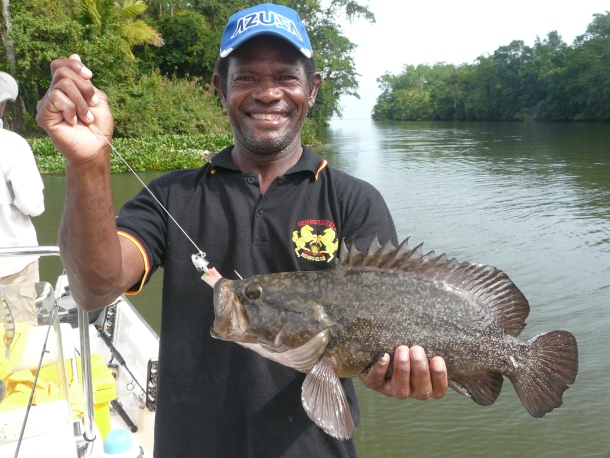ONE of the least known species of grouper encountered in Australia’s northern estuaries is the white dotted grouper (Epinephelus polystigma).
Also known as white spotted rock cod, this species occurs in estuaries and freshwater rivers from the Philippines south through eastern Indonesia, north and eastern PNG and the Solomon Islands, to Cape York in Queensland, Australia. They appear to have two main colour morphs, either white dots, or a dark brown/black botchy colour pattern.
In some parts of their range, such as Manus Island, New Ireland and the Solomon Islands, white dotted grouper are known by some natives as “lazy fish”. This is because on certain tides they aggregate near mangroves in shallow water at night. Resting motionless with their pectoral fins on the bottom with their backs out of the water, they are exceptionally easy for natives to spear at these times, using spotlights to locate them.
Some of the larger fish can even be seen lying on their sides in shallow water. Other natives regard the fish as “sneaky” due to its habit of “stealing” crabs knocked from mangrove roots by archerfish. Because of their habit of resting in shallow water at night, white dotted grouper tend to quickly become rare around areas inhabited by humans, which might be why they are only occasionally encountered in Australia, and even then only at the far northern tip of Cape York Peninsula.
Epinephelus polystigma is a medium sized grouper that grows to a maximum size of around 60 cm and 3-4 kg. Because of their relative rarity, very little is known about this species by the scientific community. What is known is the species is normally solitary, but the shallow water aggregations in brackish mangrove areas are probably spawning behaviour, as they occur mainly on new moon phases and the fish taken during this time are running ripe.
In Papua New Guinea white dotted groupers sampled between 20 and 30 cm long were mature females, while all fish above 45 cm long were mature males. The fact that all of the larger fish appeared to be males suggests that these fish probably mature first as females before changing sex into males, which is similar to the life history of other groupers in the family Serranidae.
Because this species undertakes its unusual pre-spawning aggregating behaviour in shallow mangrove areas, it appears particularly vulnerable to overfishing. While fishing in the lower reaches of some large freshwater rivers in the island of New Britain, north of Papua New Guinea, I found white spotted grouper with the dark brown/black colouration morph to be relatively common. They were eager to take both soft and hard bodied lures presented slowly along snags and undercut river banks, and put up strong performances, though they were outgunned by the sportfishing tackle meant to stop our main target species, PNG Black Bass.
All in all, the anglers on our trip to remote PNG considered these fish provided a welcome catch and release diversion during slow periods when the black bass and spottail bass weren’t co-operating. So let’s hope our northern neighbours can manage the spawning aggregations of their white spotted grouper populations so that future generations of visiting anglers can continue to inject funds into their local economies while experiencing these interesting fish first hand.

















